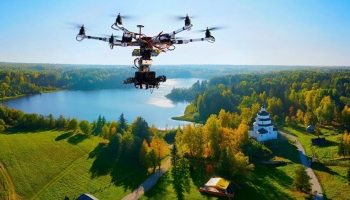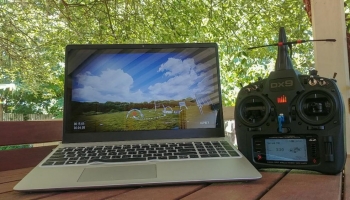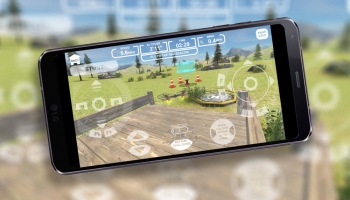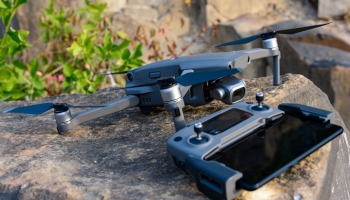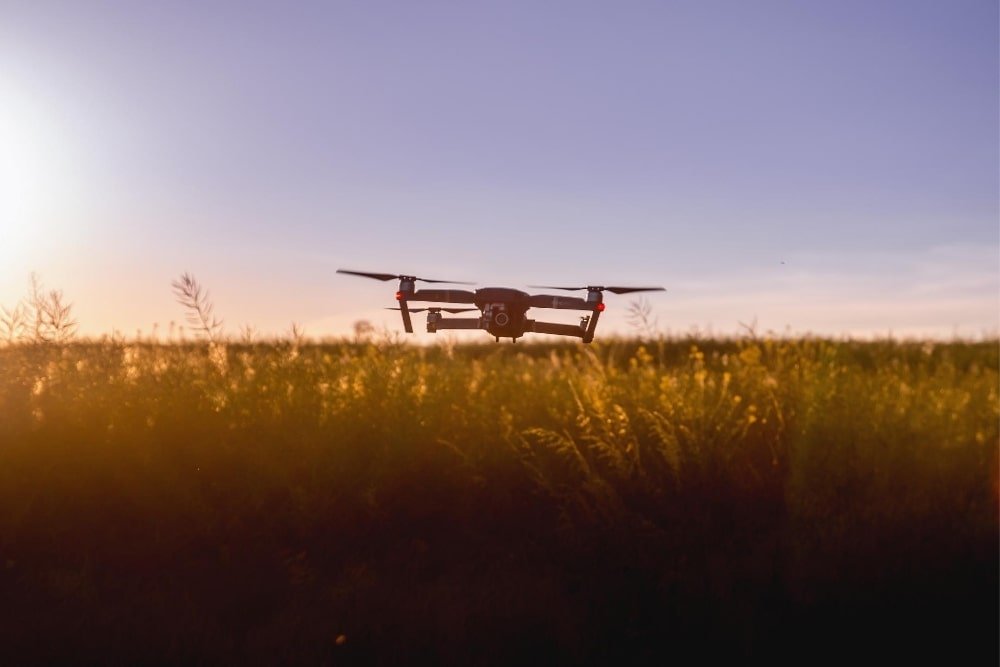
Drones have become popular in every sector due to their versatile uses. Modern drones are more advanced, and the headless mode feature is outstanding. It allows users better control and tracking of the unit from afar. The technology makes it easy for beginners to use drones. The headless mode is also known by other names such as ‘safe mode’ and ‘homelock.’
How Headless Mode Works
When a drone takes off, the head leads the way. However, when you begin operating on air, the rear may face the front, and the head becomes the tail. It is hard for you to know this while you are on the ground.
Experts have tried to solve this problem by placing different colored lights at the front-facing end, but still, due to the height, users can hardly see the light indicating the front side. The human eyesight cannot see the light beyond 50 meters above the ground.
As a solution to this problem, drone developers have created the headless mode feature, which is supposed to keep the drone in the same position it took off.
How To Switch On Headless Mode
Many drones do not have a label indicating the headless mode program. The manufacturers use different terms. Some popular brands like DJI and Yunnec use ‘Homelock’ and ‘Safe Mode’ respectively. Drone experts advise users to read the product manual because some of the drones use a universal remote control, which may be manufactured by a different company.
The headless mode informs the user about the position and direction a drone is facing. You can use the remote control to turn the drone around to face the front. Generally, when you press the left side of the remote, the drone turns left. You control it according to the current position.
To activate the headless mode, you move the stick to the left or right side, and the drone will move to the direction that you shift the stick. Even as a beginner, you must take a little time to learn the basics of operating a drone.
Why Use the Headless Mode?
The headless mode makes it easier to operate a drone by figuring out which direction it is facing. This feature is an automatic control that positions the device to front-face without straining your eyes, searching for the lights. It is a reliable application unless it encounters electromagnetic environments, such as a place close to telecommunication masts and electric power lines.
Users are advised to operate drones where there are no such obstructions. The headless mode is useful to all users, especially during filmmaking, since it allows the gadgets to function efficiently more efficiently.
Benefits of Headless Mode for Beginners
Easy to Use
When you start using a drone, the learning curve is challenging, and you have a few moves to master. In some industries, users must be precise to deliver excellent results. Hence, new operators feel under pressure to deliver the expected outcome.

The headless mode minimizes the risk of beginners failing at a given task. An inexperienced individual can position and control a drone even when it is at an invisible distance. This feature shortens the learning curve because it takes a long time to learn and master the usual drone control method.
Automated
Beginners are also encouraged to learn this mode because every sector is automating processes. Keeping up with technological advancements is a necessity in the modern world, and it is an excellent stepping stone for a new user to gain confidence. Trainees can easily catch up with manual drones flying at their own pace, should they wish to do so.
Better Results
Learners can deliver better results with the headless drone mode compared to the standard control. They can operate using automated functions. There are a few crashes, and they can follow the process accurately.
Inspires Confidence
Most new drivers find driving automated cars more straightforward to maneuver than manual vehicles. Consequently, the drivers are confident when training with manual cars because they already know the ground rules. The same concept applies to drone control. Once a learner is familiar with steering drones in the headless mode, they can venture into intense manual drone operation training. Also, with fewer errors, they are confident in flying the devices.
Shopping for Headless Mode Drones
If you wish to buy the headless mode drones, several types are available in the market. The products are categorized into three groups: kids’ products, hobbyists’ drones, and the experts’ range. Read on to understand the options:
Kids Range
Children make a remarkable percentage of drone users. Even though they use these tools like toys, they must learn to use them properly to enjoy the experience. The kids range variety is also suitable for adult beginners who want to try drones for the first time using the headless mode.
This category does not have complex operation programs. It is as straightforward as pointing to the right or left to direct the gadget to the direction you want it to go. Some top brands you can buy for kids include Autel Robotics EVO, Syma X5C-1, and Syma X5C.
Hobbyists Range
These drones are ideal for enthusiasts, which regards people who buy drones to use them for fun or leisure activities. The main buyers consist of hikers and tourists who visit various landscapes such as mountains. The drones help in taking photos and videos from panoramic angles.
These hobbyist drones feature advanced technology and better flying experience. The controls are also more stable. Hobby drones have become popular in the market. More users are willing to learn more tricks to use these tools efficiently. The hobbyist drones featuring headless mode you can buy presently include MJX Bugs 5W, Ruko F11, and HubsanZino.
Professionals Range
The professional’s range refers to drones used in construction sites, farming, rescues, or photography. Professionals use these tools for commercial activities. Hence, the units are packed with cutting-edge technology.
These state-of-the-art drones have features that make them automated and efficient to deliver the desired job without hitches. The commercial sector has benefitted from the headless mode because users can navigate complex situations and still position the drone in the right direction. Some of the best expert drones include DJI Mavic Mini and Parrot Anafi.

Advantages of Headless Mode
- The setting allows you to learn how to use the drone safely and successfully without struggling. Even experts who have been using drones for a long time say that the headless mode enhances the user experience.
- Users are entirely in control of the drone and can easily position it in the desired direction using the headless mode.
- This mode reduces the chances of making an error, and there are fewer crashes. The headless mode guides the drone and allows the user to operate it without panicking that the drone is headed in the wrong direction.
- The headless mode makes the drone accessible to the user despite the long distance. You can bring back the drone with a single button tap.
- The headless mode makes it possible to operate a drone in a tight space where there are many obstructions. The user can maneuver through a complete factory without losing control.
Disadvantages of the Headless Mode
- The headless mode makes it too easy for you. Hence, you find it hard to operate a normal drone.
- Using the headless mode limits you to the models of drones that you can use. You cannot use FPV mode, which is mainly used in camera drones.
- The headless mode does not work well in the presence of electromagnetic waves, such as an area where there telecommunications masts. The devices malfunction when they encounter power lines, which can slow down your project.
Is the Headless Mode a Shortcut?
Users sometimes feel like they are cheating or using a shortcut to operate a drone. However, you should embrace this new technology because machines are becoming automated. Even experts should learn and use the headless mode because it helps them deliver faster and better work.
The mode is also safe and omits errors that allow users to deliver exceptional results. It is a great way to enhance your skills, mainly if you use drones for commercial purposes. It is like the shift that happened decades ago when people had to stop using manual filing and take up computers instead. Improved processes that simplify the work do not mean that users are cheating.
Using Headless Mode for FPV
First Person Viewing (FPV) is the mode you use when taking photographs or video recording. Operators use the camera screen to operate the drone, and they can see the drone’s actual location.
The headless mode is essential for FPV, and both applications cannot be used simultaneously. They are mutually exclusive. Experts advise users to turn off the headless mode when they are shooting videos or photography.
Conclusion
It is up to the user to decide if they want to use the headless mode when operating their drone. Even if you are an expert, you may have to use this mode for specific projects. On the other hand, learners may also have to turn off the headless mode when using a drone for videography and photography. Users are encouraged to learn different drones operating techniques because the headless mode is one of the essential skills one needs to master the art of using drones.



